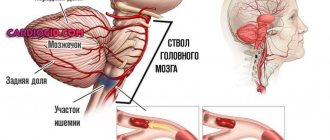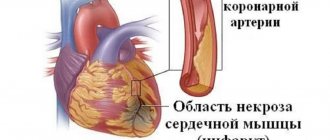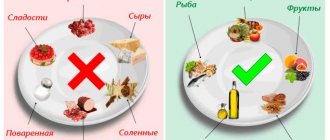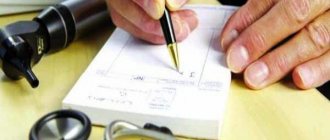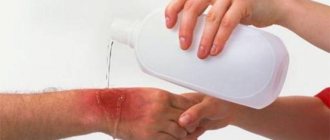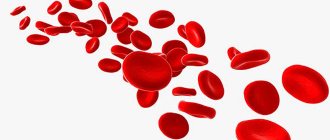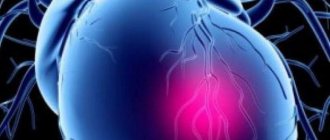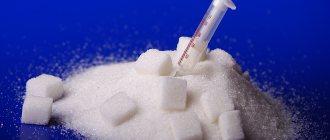Arterial hypertension, even now, when the latest technologies are being introduced into modern medicine, is one of the most common. According to statistics, one third of the entire adult population suffers from this disease. This disease requires special treatment and constant monitoring. Otherwise, there is a risk of developing complications, one of which is hypertensive crisis (HC).
Hypertensive crisis. Urgent Care. Symptoms. Treatment
A hypertensive crisis is a sharp rise in blood pressure. It can rise to very high values, for example, up to 240/120 mmHg. Art. and even higher. In this case, the patient experiences a sudden deterioration in health. Appears:
- Headache.
- Noise in ears.
- Nausea and vomiting.
- Hyperemia (redness) of the face.
- Tremor of the limbs.
- Dry mouth.
- Rapid heartbeat (tachycardia).
- Visual disturbances (flickering of flies or blurred vision).
If such symptoms occur, emergency care is needed for a hypertensive crisis.
Clinical manifestations of hypertensive crisis
Pathology develops in patients suffering.
The reason may be inadequate treatment, psycho-emotional shocks, or alcohol intoxication. In the patient’s body, a violation of vascular regulation occurs, a spasm of arterioles appears, which, in turn, increases the number of heart contractions. This leads to increased blood pressure. Symptoms of a hypertensive crisis:
- Strong headache;
- feeling of panic and fear;
- dyspnea;
- systolic pressure level exceeds 140 mm Hg. Art., but for each person these meanings are individual;
- chest pain;
- neurological signs manifest themselves in the form of nausea, vomiting, disturbances of consciousness, vision, and the appearance of seizures.
Cerebral disorders can lead to strokes, cause paresthesia of varying degrees, and cause death. The symptoms of an increasing hypertensive crisis in men and women differ slightly. In representatives of the fairer sex, signs appear quickly.
Red spots form on the face, shortness of breath, increased sweating, a feeling of heat, and body tremors are troubling. The headache is pulsating, the tonometer shows 140–200 mm Hg. Art. These are symptoms of stage I hypertensive crisis.
As the pathology progresses, noise appears in the head, vomiting, pain is localized mainly in the occipital region, darkening of the eyes (“gnats”), speech becomes difficult, consciousness is impaired, fainting may occur, and body temperature rises. Later stages are characterized by a change in motor activity, an increase in pain in the heart area, and the skin is bluish and cold to the touch. In this case, the pulse may remain within normal limits.
In men, symptoms of hypertensive crisis occur much more often than in women. This condition is especially dangerous for people suffering from heart and brain diseases. The crisis tends to recur, so patients need to constantly monitor their blood pressure.
Causes
Often, a hypertensive crisis develops in patients suffering from diseases that are accompanied by increased blood pressure (BP). But they can also occur without a previous persistent increase.
The following diseases or conditions can contribute to the development of GC:
- hypertonic disease;
- menopause in women;
- atherosclerotic lesion of the aorta;
- kidney diseases (pyelonephritis, glomerulonephritis, nephroptosis);
- systemic diseases, for example, lupus erythematosus, etc.;
- nephropathy during pregnancy;
- pheochromocytoma;
- Itsenko-Cushing's disease.
In such conditions, the development of a crisis can be triggered by any strong emotions or experiences, physical stress or meteorological factors, alcohol consumption or excessive consumption of salty foods.
Despite this variety of causes, what is common in this situation is the presence of dysregulation of vascular tone and arterial hypertension.
Symptoms
There is no specific blood pressure indicator that would indicate a hypertensive crisis. This figure is individual for each patient, and if the normal, so-called working pressure of a person is, for example, 100 to 60 mm Hg. Art., then a hypertensive crisis can begin already at 140 to 80 mm Hg. Art. Therefore, it is important to know your working pressure - this allows you to assess deviations from it.
It is impossible to fully treat a hypertensive crisis at home - the condition requires immediate hospitalization, so the first thing you need to do is call an ambulance.
The definition of a crisis is made by the main symptoms. Typically, a crisis is preceded by slightly increased blood pressure (hypertension); a person may complain of dizziness, a feeling of lack of air in the room. The crisis develops acutely, literally in a few minutes, and is characterized by a sharp deterioration in the patient’s well-being. An individually high blood pressure level is recorded. The condition is accompanied by cerebral symptoms: darkening of the eyes, “floaters” before the eyes, nausea, deterioration of visual concentration on specific objects, involuntary fluctuations of the eyeball, a feeling of fear of death, anxiety and panic. Cardiac symptoms reflect disorders in the functioning of the heart, which is subject to significant stress during a crisis, as it is one of the organs with the greatest blood circulation. The patient feels distinct heartbeats, interruptions in its work, long stops between beats or, on the contrary, tachycardia (accelerated heart rate); these symptoms may also be accompanied by chest pain. A hypertensive crisis can lead to myocardial damage.
Treating a crisis at home is strictly not recommended.
Autonomic disorders have a wide range of manifestations, from pathological reflexes and impaired peristalsis of the abdominal organs, decreased appetite, to severe pathological hyperkinesia.
During a hypertensive crisis, the so-called shock organs, or target organs, are primarily affected. These are highly circulatory organs that maintain homeostasis, which is critical to the vitality of the body. These include the brain, heart, kidneys, and liver. In addition, the retina of the eye is at high risk of damage. Thus, during an attack of hypertension, the functions of these organs are disrupted, for example, lack of diuresis as the main nephrological symptom, visual disturbances.
There is no specific blood pressure indicator that would indicate a hypertensive crisis. This figure is individual for each patient.
Depending on the degree of target organ damage, complicated and uncomplicated hypertensive crisis are distinguished. The first type, complicated, is characterized by acute progressive damage to the shock organs and poses a direct threat to the patient’s life, being an urgent terminal condition. If this type of disease is determined, you need to act immediately - the main task is to reduce blood pressure within two hours. Complications may include arrhythmias, myocardial infarction, stroke, and aortic aneurysm dissection.
The second type has a more favorable course, although it is a potential threat to life, as it can become complicated. In an uncomplicated crisis, the shock organs are not affected, although they experience increased stress. This type of disease requires a gradual decrease in pressure over 24 hours. The clinical picture of an uncomplicated crisis is usually less pronounced.
Neurovegetative form
This form of GC is most often provoked by sudden emotional overexcitation, during which a sharp release of adrenaline occurs. The patients have well-expressed anxiety and agitation. There is hyperemia (redness) of the face and neck, tremor (shaking) of the hands, and dry mouth. Cerebral symptoms are added, such as severe headache, tinnitus, dizziness. There may be blurred vision and spots or blurred vision. Severe tachycardia is detected. After the attack is relieved, the patient experiences increased urination with the release of a large amount of clear, light urine. The duration of this form of GC can range from one to five hours. As a rule, this form of HA is not life-threatening.
Water-salt form
This form of HA is most common in women who are overweight. The cause of the attack is a violation of the renin-angiotensin-aldosterone system, which is responsible for renal blood flow, circulating blood volume and water-salt balance. Patients with the edematous form of GC are apathetic, lethargic, poorly oriented in space and time, the skin is pale, and swelling of the face and fingers is observed. Before the onset of an attack, there may be interruptions in heart rate, muscle weakness and decreased urine output. A hypertensive crisis of this form can last from several hours to a day. If emergency care is provided in a timely manner for a hypertensive crisis, then it has a favorable course.
What to do?
The pathological condition develops in more than half of hypertensive patients, and it does not choose the place and time: it happens at work, while traveling, while driving, in the bathroom. First aid, not confirmed by tonometry (symptoms only), but necessary for every patient with hypertension during the development of a hypertensive crisis, consists of a certain algorithm of actions.
First aid
The algorithm is simple, you should remember simple rules:
- calling the emergency room right away, since stopping a crisis with medications from a home medicine cabinet on your own is a thankless and useless task, urgent hospitalization is needed;
- before the ambulance arrives, the patient should be laid on his back, on a hard surface (it is difficult to find the optimal body position on soft mattresses) with a high pillow under his head (half-sitting);
- no unnecessary movements (exclude excess blood flow to the head);
- stop hypoxia with an influx of fresh air (open a window or window);
- If there is a tremor, you need to wrap your legs with a warm blanket.
The use of medications to help with a hypertensive crisis is only possible if they have been previously agreed with a doctor and have been used more than once in a similar situation. Experiments are deadly: blood pressure can drop sharply, leading to collapse, coma, and death. Therefore, when using medications, you should remember that you can reduce blood pressure by no more than 30 units/hour.
Prohibited events
When stopping GC you should avoid:
- unreasonable (unnecessary when other measures are in effect) use of medications;
- a sudden change in the patient’s body position (this disrupts hemodynamics and can provoke a heart attack or stroke);
- Hand and foot baths and contrast showers are prohibited;
- Do not apply cold to the head, this can cause vasospasm and be fatal;
- All traditional methods of therapy are excluded.
Urgent hospitalization is required.
Convulsive form
This is the most dangerous form of GC, it is also called acute arterial encephalopathy. It is dangerous due to its complications: cerebral edema, development of intracerebral or subarachnoid hemorrhage, paresis. Such patients experience tonic or clonic seizures, followed by loss of consciousness. This condition can last up to three days. If emergency assistance is not provided in time for a hypertensive crisis of this form, the patient may die. After the attack is relieved, patients often experience amnesia.
Providing assistance during a hypertensive crisis complicated by a heart attack or angina pectoris
In this case, activities are often carried out in the absence of consciousness in the patient. It is necessary to lay the patient down, place a pillow under the head, and turn the neck the wrong way to prevent choking on vomit.
If the heart rhythm is disturbed, indirect massage of the organ and artificial respiration are performed. If the patient is conscious, you need to give Nitroglycerin and a drug based on phenobarbital (Corvalol or Valocordin are suitable).
An ambulance is required to be called. You can’t do anything on your own, sometimes you can’t even stabilize your condition. The same rules apply to stroke due to hypertensive crisis.
Urgent Care. Algorithm of actions
So, we found out that a serious complication of arterial hypertension and other pathological conditions is a hypertensive crisis. Emergency assistance - an algorithm of actions that must be clearly carried out - must be provided quickly. First of all, relatives or friends should call emergency help. The sequence of further actions is as follows:
- If possible, you need to calm the person, especially if he is very excited. Emotional stress only contributes to an increase in blood pressure.
- Invite the patient to move to bed. Body position is semi-sitting.
- Open the window. There must be a sufficient supply of fresh air. Unbutton the collar of your clothing. The patient's breathing should be smooth. It is necessary to remind him to breathe deeply and evenly.
- Give him an antihypertensive drug that he takes regularly.
- Place one of the emergency medications to lower blood pressure under the patient’s tongue: “Copoten”, “Captopril”, “Corinfar”, “Nifedipine”, “Cordaflex”. If the medical team has not yet arrived after half an hour, and the patient has not improved, you can repeat the medication. In total, such emergency blood pressure lowering agents can be given no more than twice.
- You can offer the patient tincture of valerian, motherwort or Corvalol.
- If he is bothered by chest pain, give a Nitroglycerin tablet under the tongue.
- If a person experiences chills, cover them with warm heating pads or plastic bottles of warm water and cover them with a blanket.
Next, doctors will act. Sometimes, when diagnosed with a “hypertensive crisis,” emergency care—the algorithm of actions taken by relatives and medical workers who came to the call—turns out to be sufficient, and hospitalization is not required.
First aid for hypertension (if its type is unknown)
The primary activities themselves include the following:
- Call an ambulance. It will not be possible to stop a hypertensive crisis with drugs from your home medicine cabinet. This is a waste of the patient's time and health. Only in a hospital setting can a person be brought out of a serious condition.
- Before doctors arrive, you need to help the victim lie down, without sudden movements that could provoke blood flow to the brain and the development of a stroke. It is better if the surface is hard; soft mattresses are not recommended, since it is difficult to give the desired position to the body.
- Open the window. A hypertensive crisis is accompanied by hypoxia and impaired tissue respiration. Therefore, an increased concentration of carbon dioxide in a room has a bad effect on overall well-being and can provoke ischemia of cerebral structures (actually a stroke condition).
- Place a pillow or bolster made from a rolled blanket under the head and shoulders to give the patient a semi-sitting position. This way, the blood flow will be adequate, and neither ischemia nor excessive nutrition of cerebral structures will occur. In addition, the breathing process will be easier, which is important to ensure normal gas exchange and prevent pulmonary edema.
- If tremor develops, you should wrap your feet in a blanket and apply a warm heating pad to them. Trembling occurs as an erroneous mechanism; it is provoked by the hypothalamus, which receives chaotic signals.
The use of drugs is possible, but only with the approval of a doctor. You should not give medication to the patient yourself. This is deadly. An acute reaction of the body is possible with a sharp decrease in blood pressure and the onset of collapse. It is very difficult to bring a person out of such a state; he will no longer be the same.
You can use medications that the patient usually takes. It is important to remember that a decrease in blood pressure by 20-30 mmHg per hour is considered safe. Anything more is life threatening.
It is better to discuss situations of this kind with your doctor separately, in advance, in order to be fully prepared in case of a hypertensive crisis. Especially in older patients.
The prevalence of the condition among patients with high blood pressure is about 40-70%; anyone can become a victim, regardless of the moment in time: at home, at work, while taking a bath, or while driving a car.
Health care
If a patient has a hypertensive crisis, the nurse’s emergency care consists of intravenous administration of Dibazol and diuretics. With uncomplicated HA, this is sometimes sufficient.
In the case of tachycardia, beta blockers provide positive dynamics, these are the drugs “Obzidan”, “Inderal”, “Rausedil”. These drugs can be administered either intravenously or intramuscularly.
In addition, the patient needs to put the antihypertensive drug “Corinfar” or “Nifedipine” under the tongue.
If the hypertensive crisis is complicated, emergency care is provided by doctors in the intensive care unit. Sometimes GC is complicated by signs of acute left ventricular failure. Ganglioblockers in combination with diuretics have a good effect.
If acute coronary insufficiency develops, the patient is also placed in the intensive care unit and the drugs “Sustak”, “Nitrosorbitol”, “Nitrong” and analgesics are administered. If the pain is not relieved, then narcotic drugs may be prescribed.
The most serious complications of GC are the development of myocardial infarction, angina pectoris, and stroke. In these cases, the patient is treated in the intensive care unit and resuscitation unit.
Complications
A hypertensive crisis is often complicated by a number of dangerous diseases, especially if a person is predisposed to them. Severe consequences of a hypertensive attack include stroke and heart attack. If the patient has a history of cardiac abnormalities, this may lead to acute or chronic failure.
Severe consequences of hypertension include stroke and heart attack.
Compressive pain appears behind the chest, and the heartbeat quickens. Pulmonary edema leads to difficulty breathing. This dangerous condition is characterized by high mortality. A great danger arises if fluid accumulates in the cerebral cortex. This process is practically irreversible if assistance is not provided in time during a complicated crisis.
The onset of collapse, when the pressure drops sharply, cannot be ruled out. Usually this condition is caused artificially, with a large dosage of antihypertensive drugs.
When a hypertensive attack occurs, the likelihood of the patient falling into a coma with subsequent death increases.
Drugs for hypertension
When a hypertensive crisis is diagnosed, emergency care (standard), as a rule, is provided with the help of certain groups of medications. The goal of treatment is to reduce blood pressure to the patient’s usual levels. It should be borne in mind that this reduction should occur slowly, because if it falls quickly, it can provoke collapse in the patient.
- Beta blockers expand the lumen of arterial vessels and relieve tachycardia. Drugs: “Anaprilin”, “Inderal”, “Metoprolol”, “Obzidan”, “Labetolol”, “Atenolol”.
- ACE inhibitors act on the renin-angiotensin-aldosterone system (used to reduce blood pressure). Preparations: “Enam”, “Enap”.
- The drug "Clonidine" is used with caution. When taking it, a sharp drop in blood pressure is possible.
- Muscle relaxants – relax the walls of the arteries, thereby reducing blood pressure. Drugs: Dibazol, etc.
- Calcium channel blockers are prescribed for arrhythmias. Drugs: “Cordipin”, “Normodipin”.
- Diuretics remove excess fluid. Drugs: Furosemide, Lasix.
- Nitrates expand the arterial lumen. Drugs: Nitroprusside, etc.
With timely medical care, the prognosis for GC is favorable. Fatal cases usually occur with severe complications, such as pulmonary edema, stroke, heart failure, myocardial infarction.
To prevent hypertension, you need to regularly monitor your blood pressure, systematically take prescribed antihypertensive drugs and follow the recommendations of your cardiologist, and also not overload yourself with physical activity, if possible, avoid smoking and alcohol, and limit your salt intake.
Danger of HA
A hypertensive crisis is dangerous due to damage to internal organs; they are called targets. A sharp rise in pressure can provoke:
- pre-stroke or acute cerebrovascular accident (ACVA);
- pre-infarction or acute myocardial ischemia with muscle necrosis;
- attack of glaucoma;
- blindness;
- renal failure of various forms.
A sudden increase in blood pressure above the limit can cause death; in order to prevent this, all hypertensive patients must always have emergency medications on hand: Captopril, Clonidine, Nitroglycerin.

